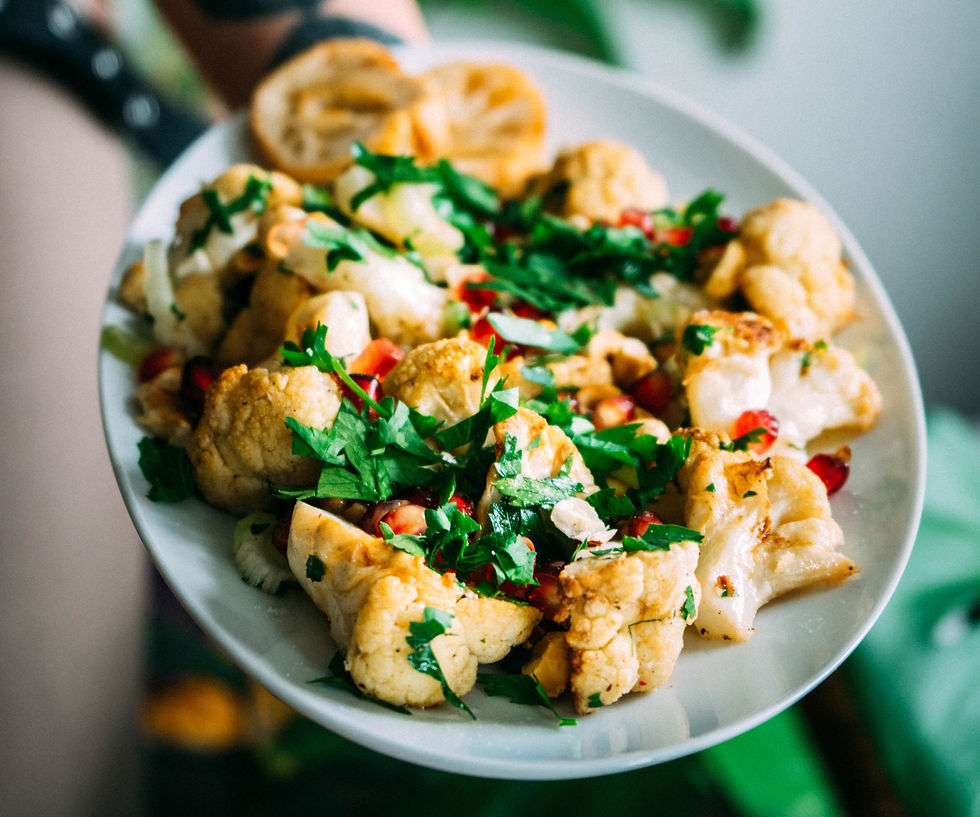
Autumn is a wonderful time of year! For many, this is when the air is crispy cool, perhaps scented with the aroma of wood smoke and the earthy fragrance of dry leaves. For those who live where winter is most decidedly coming, snow is often a visitor, and frost becomes a live-in guest!
Autumn is also a great time to shift from eating lots of dinner, salads, or other hot weather options to roasting food for your family meals. The combination of slow cooking smells and the warmth of the oven helps us shift into the cooler season, embracing the changing weather.

So, what is the science behind roasting?
The Maillard reaction is a chemical reaction between amino acids and sugars to create melanoidins, the compounds which give browned food its distinctive flavor. This was named after the French chemist Louis Camille Maillard, who, in 1912, noticed that there were different ways that foods would “brown”. The Maillard reaction is a form of non-enzymatic browning, seen when roasting meats or vegetables or baking bread, and is when high enough temperatures are used to heat food. In the cooking process, Maillard reactions can produce hundreds of different flavor compounds depending on the chemical constituents in the food, the temperature, the cooking time, and the presence of air. These compounds, in turn, often break down to form yet more flavor compounds. Of course, if you let the reaction continue too long the compounds begin to shift into burnt surfaces and acrid smells.
This is different from enzymatic browning, which is what happens when you bite or cut open an apple, banana, or avocado and then leave it be for a little while. The parts exposed to the air start to brown, affecting the color, texture, and taste of the fruit or vegetable, but are not cooked. It’s the exposure to oxygen that causes browning.
How can this be explained for kids?
Try a compare and contrast approach - one day make a roasted chicken, another day make chicken soup where the diced chicken is simmered in the broth. Ask your kids what are the differences they notice? Do they have a preference for one over the other?

Invite your child(ren) into the kitchen while you prepare roasted veggies. Talk about how the size, density, and amount of water affects how quickly they cook. Taste some of the raw veggies and then, after roasting, note how the carbohydrates/starches have changed into sweeter sugars, the texture of the veggies has softened, and the colors are less vivid and more brown. That’s why eating roasted broccoli or beets is so different from eating raw broccoli or beets, and why boiled potatoes are different from roasted potatoes.
Another fun way to demonstrate roasting food with your family is with a campfire and roasted marshmallows. What happens to the marshmallow when it’s heated at different distances (i.e., temperatures) from the flame? Note the different colors, aromas, and flavors that emerge from the different stages of Maillard reaction, from the raw marshmallow all the way to the “oops-it’s-on-fire” stage? * Now you can also introduce caramelization, a different process from the Maillard reaction. Caramelization is the process of heating sugar (such as granulated white sugar or the sugar contained in a food) at high temperature so that water is removed and the sugar is broken down (as into glucose and fructose) and then reformed into complex polymers producing a sweet, nutty, or buttery flavor and golden-brown to dark brown color.

Next time you build a campfire and start roasting hotdogs and making s’mores you can give your family a little hands-on science knowledge whilst eating yummy foods and telling each other campfire stories.

Here’s a fun and easy recipe for making Rosemary Breadsticks with your family, from https://cookingwithkids.org/recipe/breadsticks/
Rosemary Breadsticks
Ingredients
1¼ cups warm water
2 teaspoons baking yeast
2 tablespoons olive oil
1 tablespoon honey
1 teaspoon dried rosemary
1½ teaspoons salt
1 cup whole wheat flour
2½ cups white flour
Additional olive oil and kosher salt
Instructions
Preheat oven to 425 degrees F.
In a bowl, combine the water and yeast. Let sit for 2 minutes, until the yeast is dissolved. Add the olive oil, honey, rosemary, salt, and whole wheat flour, stirring well. Add the white flour, 1 cup at a time, stirring until a stiff dough forms. On a clean, lightly floured work surface knead the dough for 3 to 5 minutes, until smooth.
Divide the dough into 8 equal pieces. Form each piece into a circle about 3 inches in diameter. Now divide each piece into 4 equal pieces. You will have 32 pieces in all. Roll each piece of dough into a cylinder about 8 inches long and place on a baking sheet.
Lightly brush the breadsticks with olive oil and sprinkle with salt as desired. Bake the breadsticks for about 15 to 18 minutes, turning once during the baking, until lightly browned and almost crisp. Let the breadsticks cool before serving.
* Obviously, whenever your children are around heat sources, help them understand how to stay safe. This means no loose clothes or hair, using heat-resistant mitts or gloves, and being extremely careful with marshmallow sticks, flaming or otherwise, plus lots of age-appropriate attention from the grownups around them. Roasting foods with your family should be safe, fun, and educational!
Additional Resources Guide:


Commenti